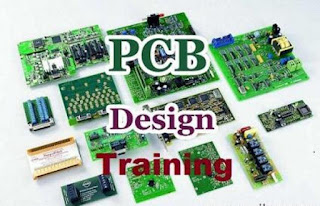What is a PCB?
A PCB (printed circuit board) mechanically supports electronic parts
that are electrically connected with the help of conductive pathways,
traces etched from copper sheets which are laminated onto a
non-conductive substrate. Much of the electronic industry's assembly, PCB Design Training in Jaipur and quality control needs are set by standards which are set
by the IPC organization. The main generic standard for the design of a
printed circuit is IPC-2221A, regardless of the material used to
manufacture the board.
Circuit boards consist of an insulator
which consists of one or numerous layers of material glued into a single
entity. The additional layers serve as grounding to the board. The
copper traces are either created by laying down individual lines
mechanically or by coating the entire board in copper and stripping away
the excess. By stripping away the excess, the needed printed circuits
are left which connect electronic parts.
Many printed circuit
board shops can help with the design process and offer high end features
such as an auto router and trace optimizer which can drastically
decrease the layout time. However, the best results for laying out it
are achieved by at least some manual routing.
Custom PCB
These
days, there are various kinds of circuit boards available in variety of
materials and finishes, including FR4, FR4 High Temperature, Polyimide,
GeTek, Rogers, Arlon, Nelco, Alumina, Ceramic, Bakelite, FR1, CEM1, and
CEM5. The thickness of a circuit board varies based on the number of
layers and can be as thin as 1.0mm (0.0394"). They can be single sided
or multi-layered with cooper clad of 1-oz or higher. Although these are
standard PCBs available in the market, yet you can get a customized it
to suit your needs. The key is to find the right PCB manufacturer to
make the boards to your specifications.
A custom PCB can be made
in several ways. For instance, flex circuit boards are designed to be
very flexible. This allows it to be placed in positions which are
otherwise not possible or to be used in wire systems. A PCB can also be
used in satellites, spaceships and other machines in outer space. Rigid
copper cores are designed in a way that conduct heat away from the
sensitive parts and protect them in the extreme temperatures they
experience.
Some circuit boards are designed with an interior
conductive layer to transfer power to various parts without using extra
traces. These customized needs are circuit boards that are ordered by
companies to fulfill specific requirements with limited space. In
addition, PCBs are also used by students and electronic hobbyists for
their custom projects and applications.
Advantages
* Are cost-effective and highly reliable.
* Economical for high-volume production.
* Have color codes for different connections and are therefore easy to install.
* Mention the rating of the device which helps in their maintenance.
* Economical for high-volume production.
* Have color codes for different connections and are therefore easy to install.
* Mention the rating of the device which helps in their maintenance.
Disadvantages
* More layout effort.
* Higher initial cost as compared to point-to-point constructed circuits or wire-wrapped.
* Etching of circuit boards generates chemicals which are dangerous for the environment.
* Cannot be updated once it gets printed.
* Higher initial cost as compared to point-to-point constructed circuits or wire-wrapped.
* Etching of circuit boards generates chemicals which are dangerous for the environment.
* Cannot be updated once it gets printed.




Comments
Post a Comment